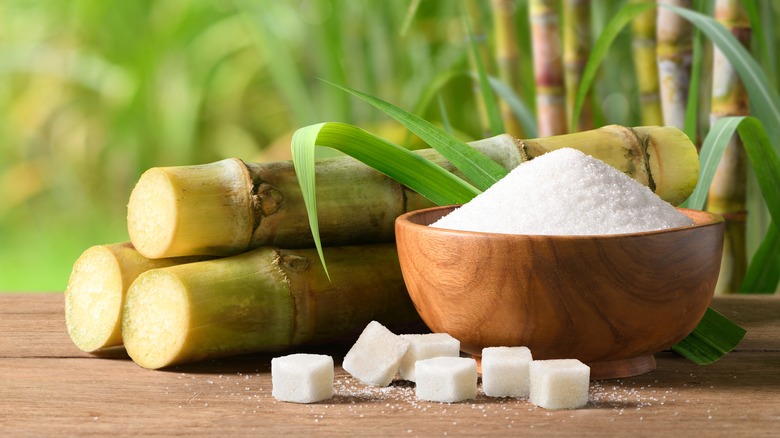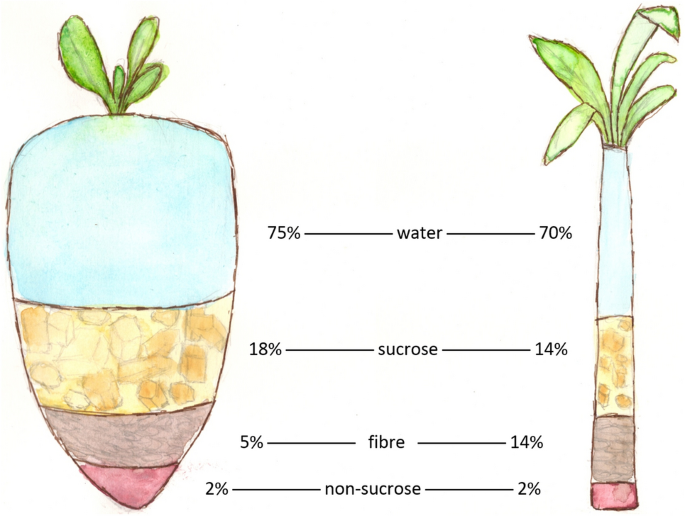Understanding beet sugar vs cane sugar helps shoppers make better choices about their sweeteners.
Understanding beet sugar vs cane sugar helps shoppers make better choices about their sweeteners.
Blog Article
Exploring the Distinctions being used and Advantages In Between Beet Sugar Vs Cane Sugar
In the cooking world, the option in between beet sugar and cane sugar is not just concerning sweetness but involves a nuanced consideration of taste, application, and influence. While both sugars originate from different plants, each undertakes one-of-a-kind manufacturing procedures that discreetly influence their features and suitability for various recipes. As cooks and consumers progressively focus on both the environmental and flavor accounts of their ingredients, comprehending these differences comes to be critical. This exploration uses understanding into exactly how each sugar kind can best enhance culinary productions.
Origins and Production Processes of Beet and Cane Sugar

Walking cane sugar, on the various other hand, comes from the sugarcane plant, a tropical yard native to Southeast Asia however currently grown in exotic areas worldwide - beet sugar vs cane sugar. The production of cane sugar starts with the harvesting of cane stalks, which are squashed to release the juice.

Nutritional Material and Health Considerations

When comparing the dietary web content of beet sugar and cane sugar, it comes to be evident that both kinds basically give the very same caloric worths, with about 16 calories per tsp and no substantial nutrient variety. Both sugars, when eaten in excess, can contribute to elevated blood glucose levels, a threat factor for diabetes and other metabolic disorders. From a wellness viewpoint, regulating consumption of any kind of sugar, whether from beet or cane, is a good idea to stay clear of these prospective unfavorable results on well-being.
Flavor Profiles and Culinary Applications
Despite their comparable chemical structures, beet sugar and cane sugar vary subtly in taste, which can influence their usage in numerous cooking contexts. Cane sugar typically lugs a hint of molasses, also in its polished type, providing a cozy, caramel-like touch that improves baked products, coffee, and chocolate-based recipes. On the various other hand, beet sugar is identified by its very refined, neutral preference, making it a functional sugar that does not change the flavor accounts of dishes.
Environmental Impact and Sustainability
While both beet and cane sugars are obtained from plants, their environmental influences vary considerably due site to the unique techniques of growing and processing needed for each. Sugar beet farming often entails considerable automation, which can enhance nonrenewable fuel source usage and carbon discharges. Beets can be grown in cooler environments and call for less watering, possibly minimizing water use compared to sugarcane. Sugarcane, on the various other hand, is usually expanded in exotic regions where it counts greatly on irrigation visit this site and a longer growing period, boosting its water impact.
Furthermore, the handling of sugarcane frequently produces a substantial quantity of waste, including bagasse, which, although usable as biofuel, regularly contributes to air contamination if shed inefficiently. Sugar beet handling utilizes more of the raw materials, resulting in less waste. Both markets face difficulties in decreasing their environmental impacts, however continuous developments in agricultural methods and waste monitoring are aiming to improve sustainability.
Economic Elements Influencing the Sugar Sector
The economic characteristics of the sugar sector are significantly influenced by global market demands and trade policies. Variables such as tariffs, aids, and global trade contracts play vital functions in shaping the competitive landscape. In regions where sugarcane or sugar beet manufacturing is subsidized, manufacturers might have a monetary advantage that allows them to offer lower rates on the global market. This can create differences in success and market accessibility for producers in countries without such aids.
In addition, variations in international need for sugar, affected by nutritional fads and commercial usage in foodstuff, directly influence costs and production levels. beet sugar vs cane sugar. Climate condition view website additionally play an essential function, as they can dramatically influence plant returns and, as a result, the supply chain. This irregularity introduces a degree of financial unpredictability that can lead to investment volatility in sugar production sectors, influencing choices from planting to market strategy
Final Thought
Finally, both beet and cane sugar have distinct high qualities that suit different cooking requirements. While cane sugar imparts an abundant taste suitable for enhancing baked goods, beet sugar's neutrality is perfect for lighter dishes. Nutritional resemblances regardless of, their distinctive manufacturing processes and environmental impacts add intricacy to the option between them. Hence, understanding these differences assists chefs and consumers make notified decisions that align with their wellness, culinary, and honest preferences.
Report this page